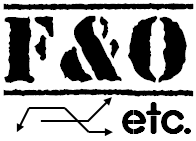|
|
In the previous article, we'd explained about the Bull Call Spread: Trading Example - that was for constructing the bull spread using call options. In this series, we will tell about constructing the bull spread using the PUT options. If you are unfamiliar with what a spread option is, the we recommend that you start with the following article on Options Spreads which clearly details the what the various spread are and the naming convention followed.
So let's concentrate back on Options Bull PUT Spread.
Example & Payoff Function of Bull Put Spread
As the name suggests, the Bull Put Spread is made up of Puts i.e. 2 put option positions are used to make up a Bull Put Spread. The word Bull indicates that it will be profitable to the BUYER of this Bull Put Spread if the market goes up. And lastly, the word spread indicates that both the profit and the loss are limited i.e. spread within a limit, hence the name Bull Put Spread.How to construct a Bull Put Spread?
The Bull Put Spread is one of simple options spread trading strategy which can be constructed simply by taking 2 positions:
1) Buy or Long an Out of the Money (OTM) Put Option and
2) Sell or Short an In the Money (ITM) Put Option
(See Moneyness of Options - OTM, ATM, ITM Options to know about ATM, ITM and OTM options)
So, when you take the above two positions, what is the net payoff structure you get? Have a look at this Payoff function for Bull Put spread constituents:

Payoff Function Chart of Bull Call Spread:
Suppose that Microsoft Stock (the underlying) is trading at $30 per share and you have a near term BULLISH view about Microsoft - i.e. you believe that Microsoft will go up in near term by a limited percentage- say 3-5%. However, you dont want to take the risk of taking a naked long call position for the fear of loosing all your capital. Although you believe Microsoft will go up, but you dont rule out the possibility of your belief coming false - Microsoft may give you negative returns also. So, the best thing you can do is go for a spread position like a Bull Call Spread or a Bull Put Spread. Let's focus on Bull put spread as that is the topic of this article.
So you need an ITM Short Put and OTM Long Put. Suppose that you take ITM short Put at the strike price of $33 (GREEN Graph) and OTM long put at the strike price of $27 (the PINK Graph), when the underlying Microsoft stock is trading at $30. Suppose that the ITM Put sale gives you $5 and OTM Put buy is for $2. So you net receive $3 from this Bull Put Spread position.
Now, let's add the two. Since its a PUT combination, we need to start from the RIGHT side.
- above $33, both PINK and GREEN graphs are ZERO, so net payoff function above $33 remains ZERO
- between $27 and $33, the PINK graph is ZERO, while the Green graph is slanting downwards. Zero PINK + Down Slanting Green = Down Slanting Green
- Between $0 and $27, PINK graph is slanting upwards and GREEN graph is slanting downwards. Up and dow slants cancel each other and you get a horizontal line.
The net graph is displayed by the RED graph, but this is still without price consideration (of $5 received and $2 paid = $3)
Now, that we've constructed the Bull Put Spread (without price) using the above 2 put positions, Proceed Further to Bull Put Spread Payoff Function & Example with price taken into account, for accurate analysis

0 Comments: Post your Comments
Wish you all profitable derivatives trading and investing activities with safety! = = Post a Comment